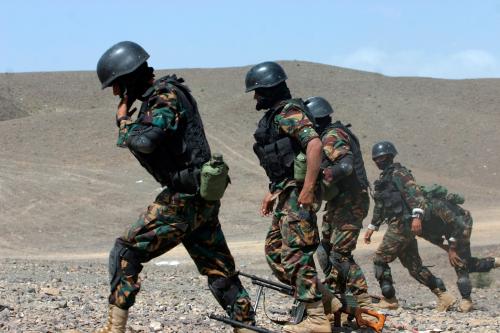Daniel Byman recently explained in the New York Times that the Islamic State threat is now weakened and the jihadi threat to the United States has diminished.
America saw only one death from jihadi-linked terrorism in 2018. In Florida, a teenage boy inspired by jihadi propaganda stabbed a 13-year-old friend to death during a sleepover—hardly an Islamic State spectacular. Far more Americans died from right-wing terrorism (15) in 2018, and even the Incel—involuntary celibate—movement was responsible for more terrorism deaths, when one of its adherents killed two people at a yoga studio.
President Trump ignores these good numbers and hypes the terrorism threat. He invoked the specter of terrorism to justify more funding for a border wall with Mexico (despite no known jihadi terrorists crossing to the United States from Mexico) and used a recent attack in Europe to again pitch the wall. Reflecting his rhetoric, Americans’ fears of jihadi terrorism remain high.
A mix of successful counterterrorism overseas, more effective measures at home, and a weak jihadi movement at home explain the low death toll. The terrorism threat is always evolving, however. Militant groups that also use terrorism plague many Middle Eastern countries. In the West, the networks, connections, and propaganda forged to recruit and proselytize for the Syrian civil war are likely to endure in some form. Although the Islamic State itself is hit hard, lone wolves and others who act in its name persist, and the Islamic State itself is more likely to revive now that the United States is prematurely removing its troops from Syria. Perhaps most worrisome, right-wing violence is surging in the United States, with Trump’s rhetoric legitimating it and emboldening the worst elements.
Yet for an America still viewing the terrorism threat through the lens of 9/11, it’s important to recognize that, for 2018 at least, jihadi-linked terrorism was on the decline.
The Brookings Institution is committed to quality, independence, and impact.
We are supported by a diverse array of funders. In line with our values and policies, each Brookings publication represents the sole views of its author(s).







Commentary
Some terrorism good news
December 31, 2018